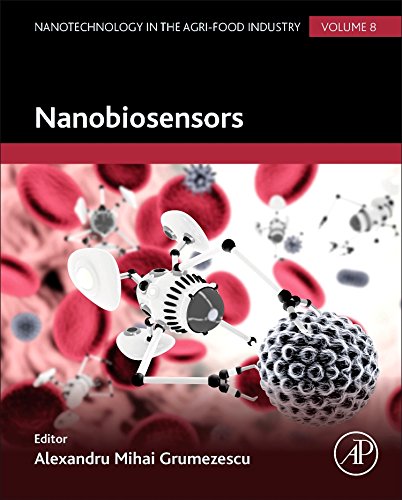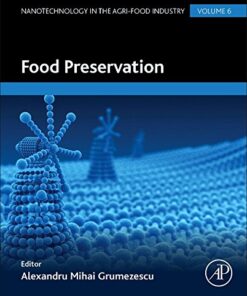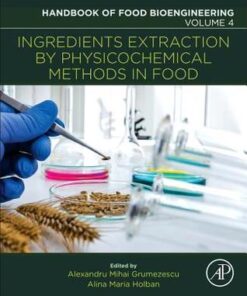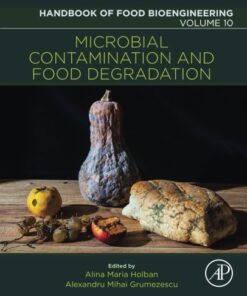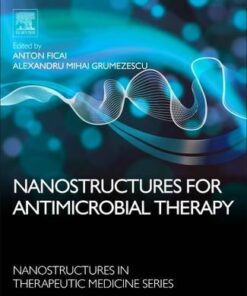(PDF) Nanobiosensors By Alexandru Mihai Grumezescu
$18.00
Download instantly Nanobiosensors By Alexandru Mihai Grumezescu. It is ebook in PDF format.
ISBN-10: 0128043016 ISBN-13: 9780128043011
Preview
This is the PDF eBook version for Nanobiosensors By Alexandru Mihai Grumezescu
Table of Contents
Series Foreword
Series preface
Volume preface
1: Nanomaterials-based optoelectronic noses for food monitoring and classification
Abstract
1. Introduction
2. Principles of Chromogenic Arrays
3. Multivariate Analysis Methodologies
4. Examples of Application of Chromogenic Optoelectronic Noses
5. Freshness Monitoring
6. Quantification of Microbiological Loading, Storage Days, and Sensory Score
7. Determination of Blue Cheese Origin
8. Conclusions
2: Biosensors for detection mycotoxins and pathogenic bacteria in food
Abstract
1. Introduction
2. Biosensors and Nanomaterials: General Consideration
3. Mycotoxins
4. Pathogenic Microorganisms
5. Conclusions
Acknowledgments
3: Bioconjugated nanomaterials for monitoring food contamination
Abstract
1. Introduction
2. Aptamers
3. Conventional Methods for Food Contamination Detection
4. Monitoring Food Contamination Through Bioconjugated Nanomaterials
5. Multiplexed Biosensors
6. Summary
Acknowledgments
4: Detection of food contaminants by gold and silver nanoparticles
Abstract
1. Introduction
2. Melamine Detection Using Gold Nanoparticles
3. Malathion Detection Using Silver Nanoparticles
4. Colorimetric Detection of LPS Using Gold Nanorods (AuNRs)
5. Conclusions
5: Nanomaterial-based electrochemical biosensors for food safety and quality assessment
Abstract
1. Introduction
2. Typical NMs Used in New Electrochemical Biosensing Devices for Food Analysis
3. NM-Based Electrochemical Biosensors for Food Contaminants Analysis
4. Conclusions
6: Chemical sensors based on hybrid nanomaterials for food analysis
Abstract
1. Introduction to Hybrid Nanomaterials
2. Chemical Sensors Aspects
3. Types of Nanomaterials Employed for Sensor Design
4. Types of Sensors and Methods of Detection
5. Novel Sensing Platforms Based on Microfluidics
6. Final Remarks
Acknowledgments
7: Prevention of food spoilage using nanoscale sensors
Abstract
1. Introduction
2. Nanobiosensors
3. Gas Nanosensors
4. SbSI Nanosensors of Humidity
5. Conclusions
Acknowledgments
8: Biosensor technologies for analyses of food contaminants
Abstract
1. Introduction
2. Biosensors
3. Application of Biosensors for Food Contaminants Detection
4. Commercial Biosensors for Food Contaminants
5. Conclusions and Future Perspectives
Acknowledgment
9: Analytical and advanced methods-based determination of melamine in food products
Abstract
1. Introduction
2. Melamine Structure and Application
3. Toxicology of Melamine and Its Metabolite
4. Melamine Contamination Cases
5. Tolerable Daily Intake (TDI) and Risk Assessment of Melamine
6. Modern Instrument Analytical Methods
7. Advanced Methods for Determination of Melamine
8. Conclusions
Acknowledgment
10: Nanomaterial-based sensor platforms for facile detection of food contaminants
Abstract
1. Introduction
2. Current Approaches for Pathogen Detection from Contaminated Food
3. Nanomaterials as Recognition Element and Signal Enhancer
4. Nanomaterials-Based Signal Transducers and Sensor Platforms
5. Conclusions and Future Perspectives
11: Evanescent field effect–based nanobiosensors for agro-environmental and food safety
Abstract
1. Introduction
2. Label-Free Optical Biosensor Techniques Based on Evanescent Field Effect
3. Nanobiosensor Applications for Agro-Environmental and Food Safety
4. Conclusions
Abbreviations
Acknowledgments
12: Micro- and nanotechnology-based approaches to detect pathogenic agents in food
Abstract
1. Introduction
2. Food Pathogen Detection Using Micro- and Nanotechnologies
3. Summarizing Remarks
13: Contaminant sensors: nanosensors, an efficient alarm for food pathogen detection
Abstract
1. Introduction
2. Foodborne Pathogens and Their Significant Characteristics Used for Detection
3. Potential of Nanotechnology in Microbiological Analysis Development
4. Conclusions and Outlook
14: Contaminant sensors: nanotechnology-based contaminant sensors
Abstract
1. Introduction
2. Biosensors
3. Nanosensors
4. Detection Using Nanosensors
5. Nanobiosensors in Food Technology Market
6. Safety and Challenges
7. Future Prospects
8. Conclusions
Acknowledgments
15: Nanocomposite biosensors for point-of-care—evaluation of food quality and safety
Abstract
1. Introduction
2. Biosensors and the Food Industry
3. Nanocomposite-Based Biosensors
4. Application of Nanosensors in the Food Industry
5. Advanced Packaging Quality
6. Smart Food Packaging Sensors
7. Regulatory Aspects
8. Future Aspects and Challenges
Abbreviations
16: Plasmonic nanoparticles and quantum dots in the identification of inorganic and organic contaminants in food samples
Abstract
1. Introduction
2. Identification of Metal Ions by Plasmonic Nanoparticles and Quantum Dots as Probes
3. Identification of Pesticides and Organic Contaminants by Plasmonic Nanoparticles as Probes
4. Identification of Pesticides and Organic Contaminants by Quantum Dots as Probes
5. Summary
17: A technique comes to life for security of life: the food contaminant sensors
Abstract
1. Introduction
2. Contamination due to Environmental and Industrial Exposure
3. Food Adulterant Detection
4. Food Packaging Materials
5. Conclusions and Future Outlook
Acknowledgments
18: New trends in the food industry: application of nanosensors in food packaging
Abstract
1. Introduction
2. Smart/Intelligent Packaging Systems
3. Sensor, Biosensor, and Nanosensor Concepts
4. Classification Nanosensors
5. Radio Frequency Identification (RFID) Sensors
6. Gas Sensors
7. Sensors for Food Pathogens and Contaminants
8. Main Challenges and Directions for Nanosensor Applications
9. Concluding Remarks
Acknowledgments
19: Nanomaterial-based biosensors for food contaminant assessment
Abstract
1. Introduction
2. Biosensors as Emerging Tools for Analysis
3. Applications of Nanomaterial-Based Biosensors for Food Analysis
4. Applications of Sensor Arrays for Food Analysis
5. Conclusions
20: Fluorescent nanosensors: rapid tool for detection of food contaminants
Abstract
1. Introduction
2. What Is Fluorescence?
3. Nanotechnology-Enabled Sensors: Quantum Dots
4. Quantum Dots: Sensing Foodborne Pathogens and Toxicants
5. Conclusions
Subject Index
